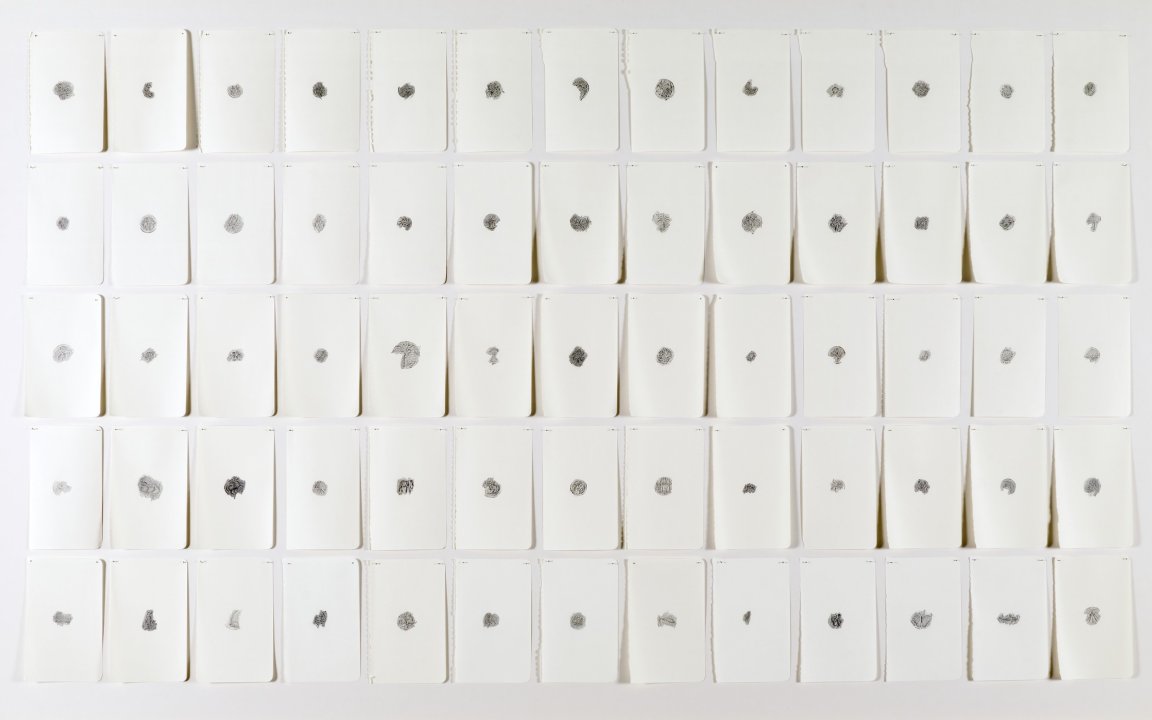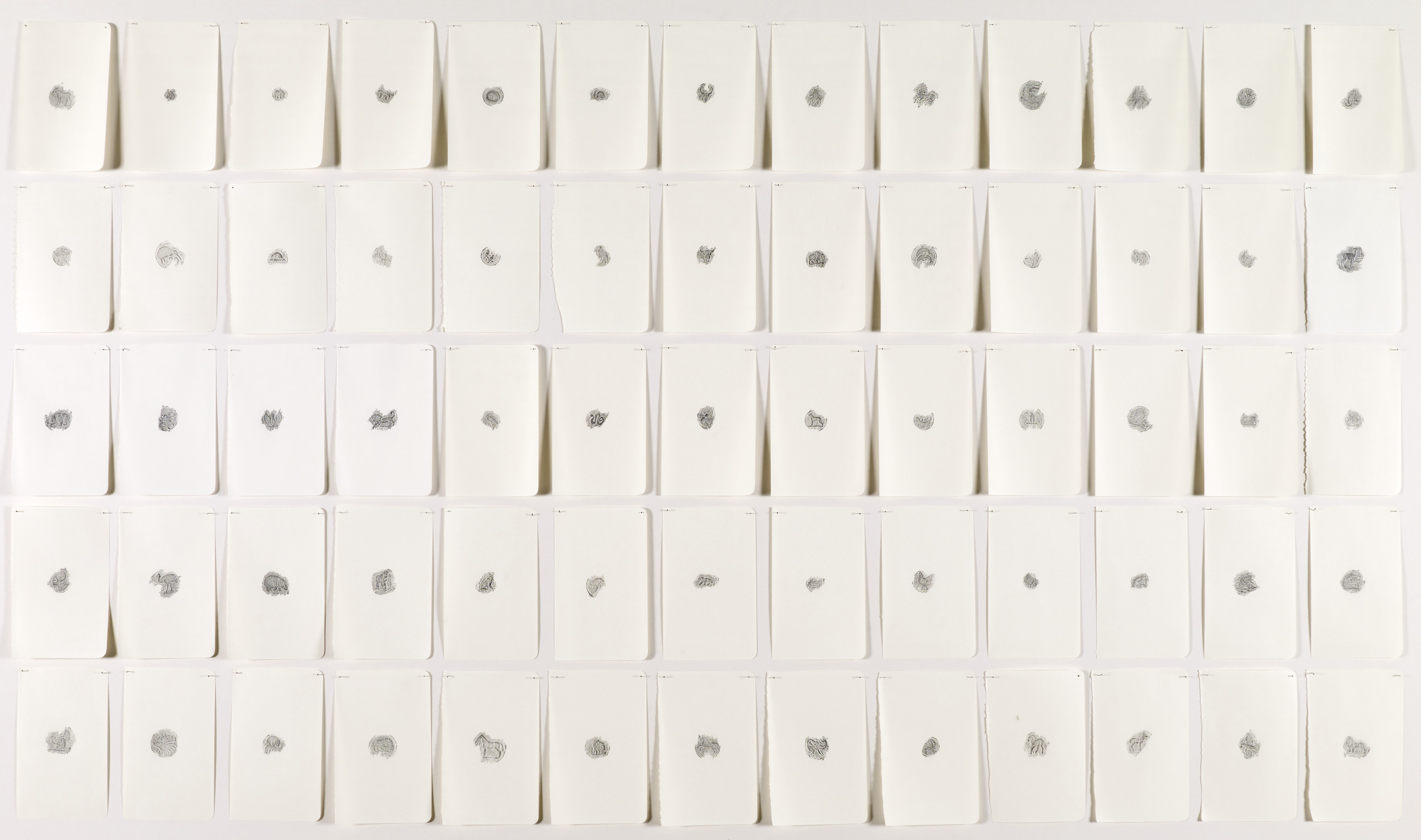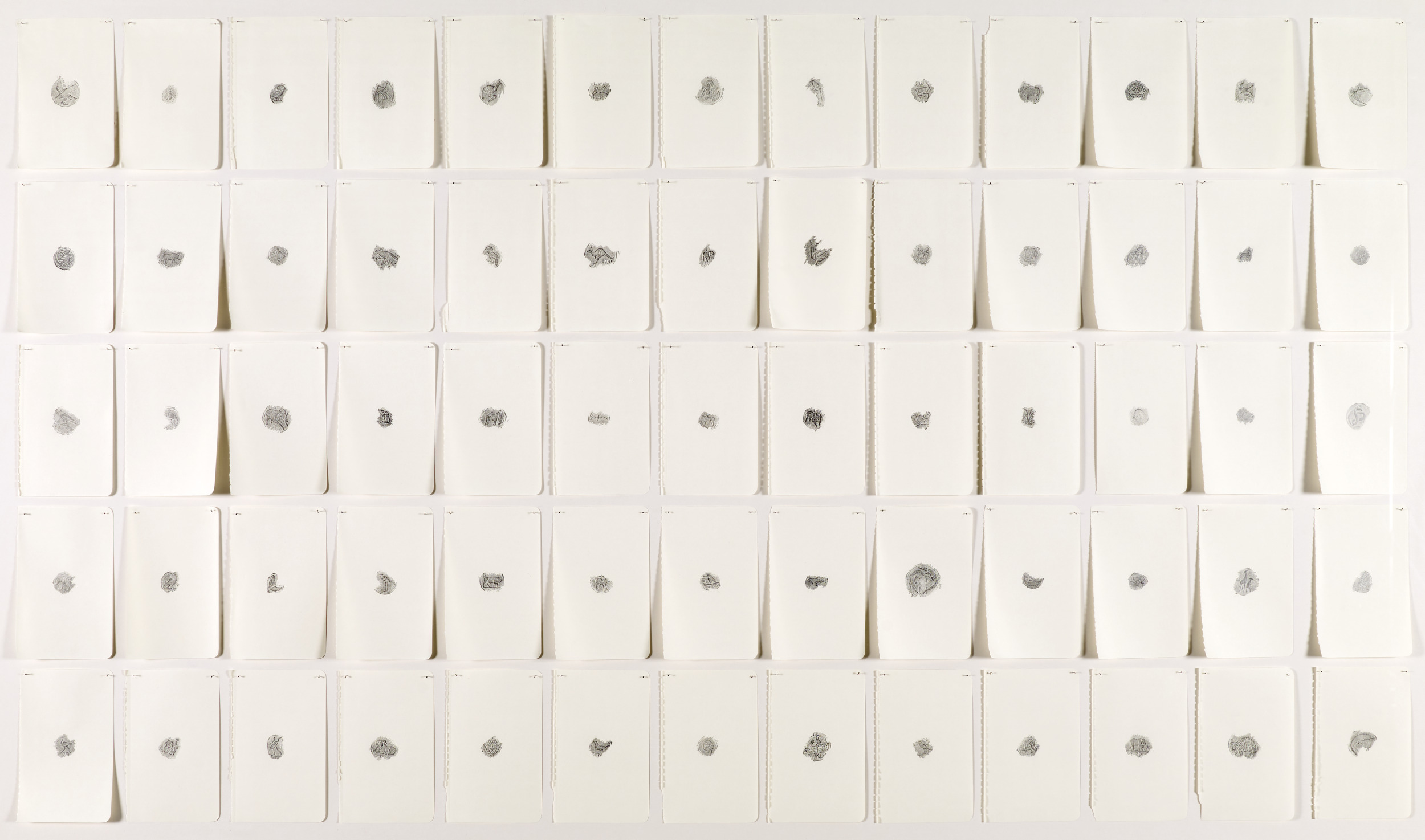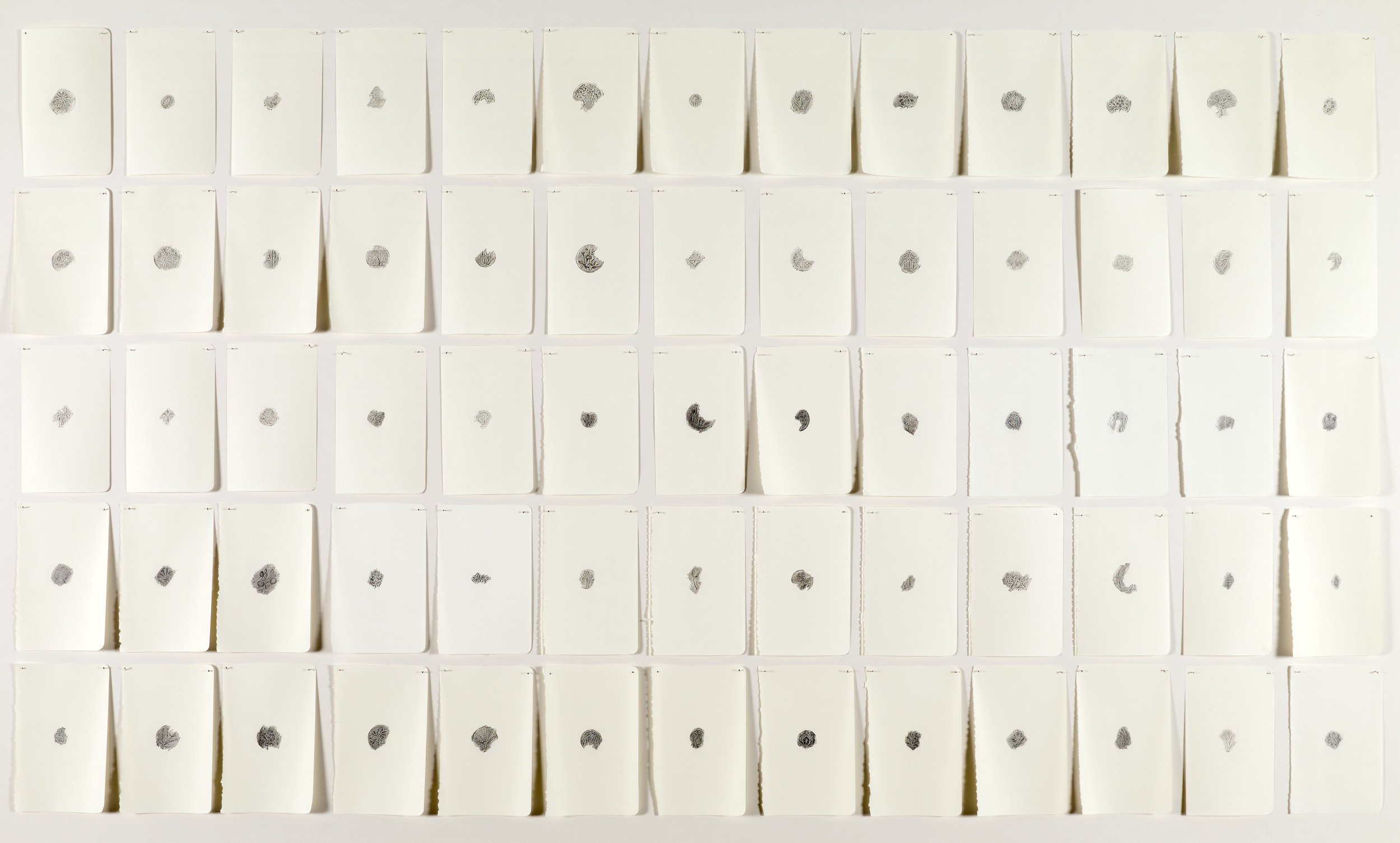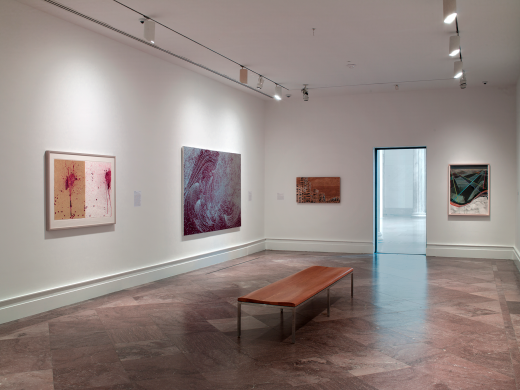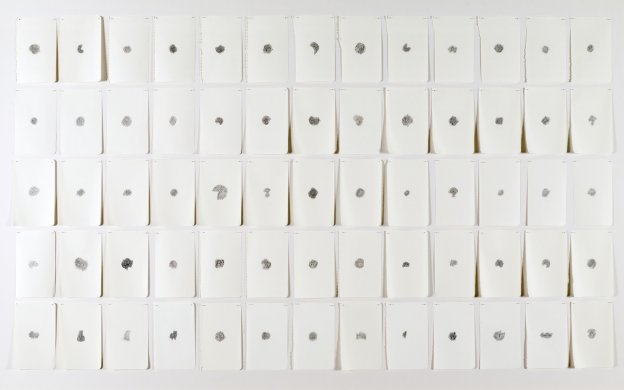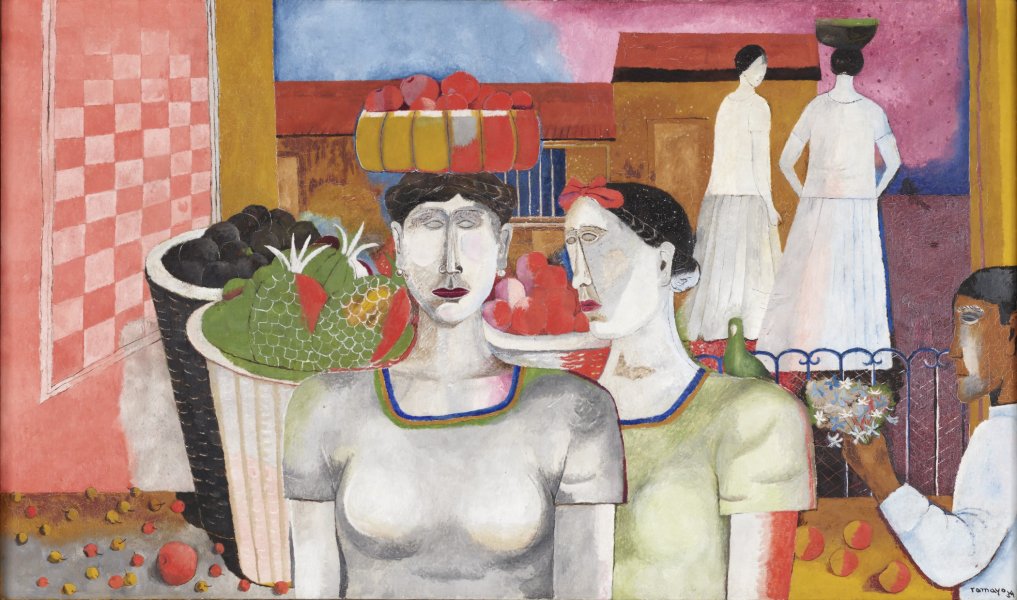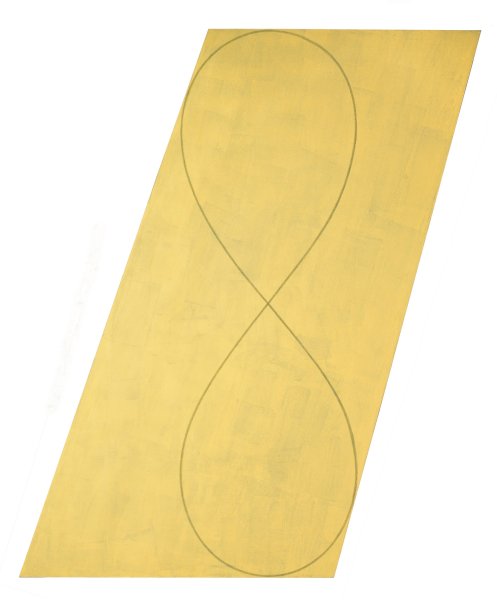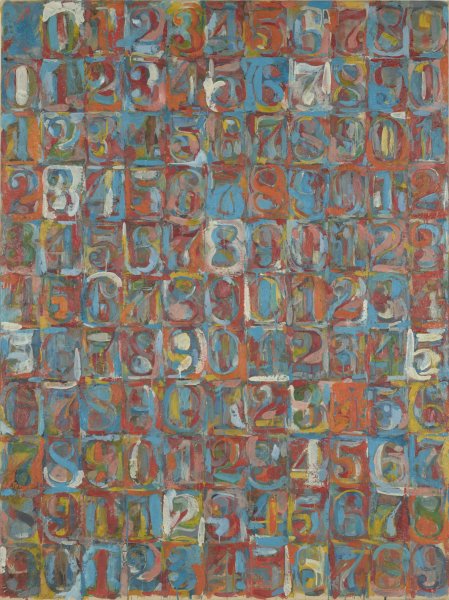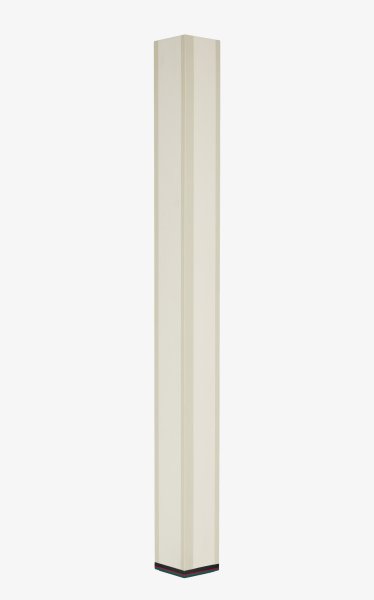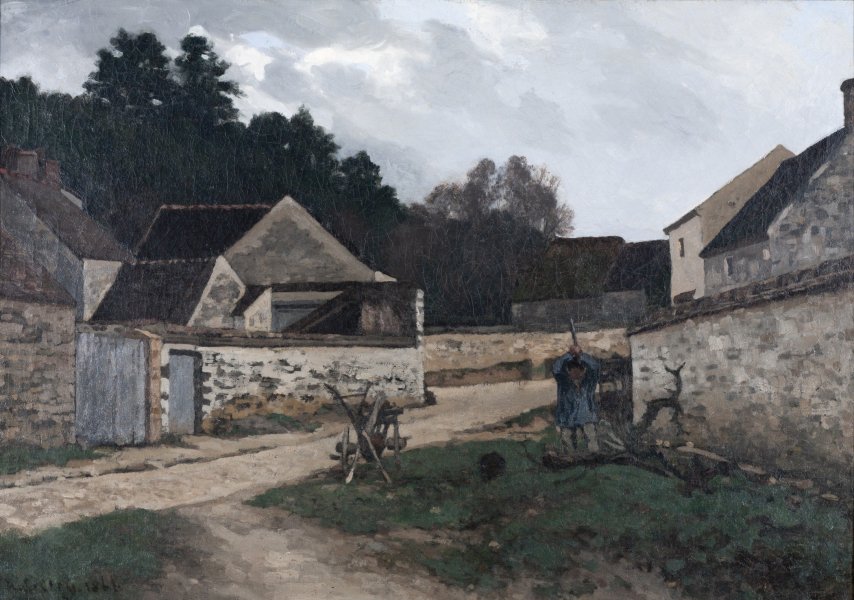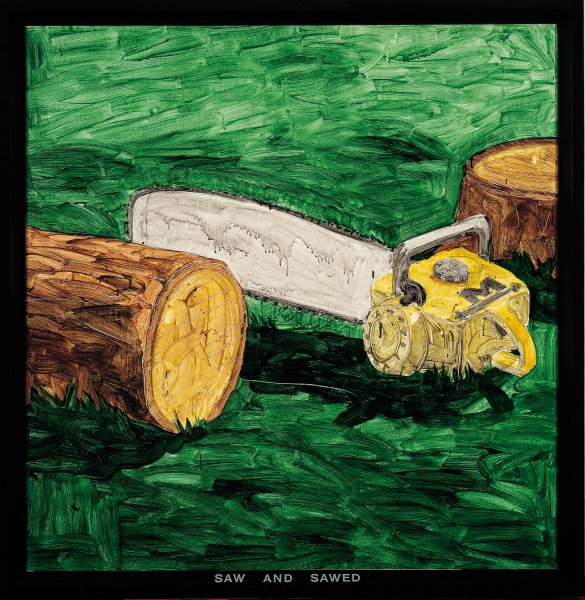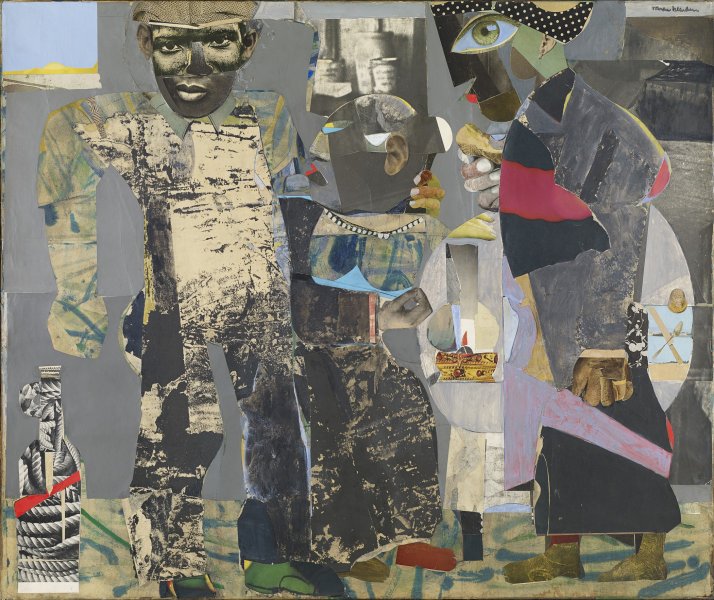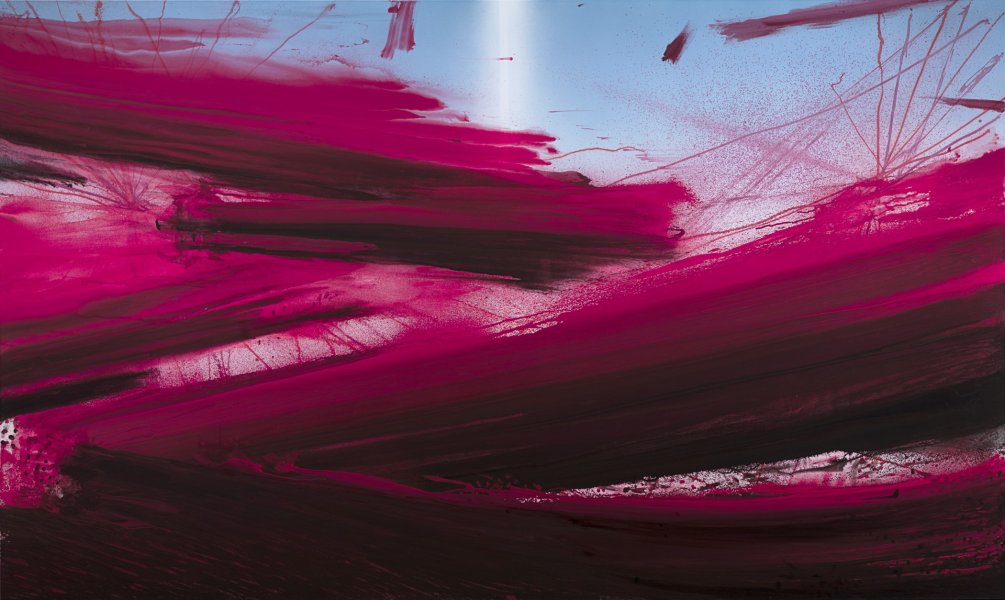Milena Bonilla
Colombian, born 1975
Money, 2012
Artwork Details
Materials
set of 260: pencil frottage of coins on paper
Measurements
sheet (each): 5 x 13 inches (12.7 x 33.02 cm); each (framed): 36 5/8 x 58 5/16 x 1 1/8 inches (93.03 x 148.11 x 2.86 cm)
Collection Buffalo AKG Art Museum
Credit
By exchange: Fellows for Life Fund, Charles Clifton Fund, Charles Clifton and James G. Forsyth Funds and Gift of Dermotte and Company, 2016
Accession ID
2016:3a-d
Throughout her work, Milena Bonilla creates a narrative thread linking the economy, politics, and world geography to the discord between nature and material culture. Bonilla proposes new ways to chart, and therefore address, such issues. To create Money, Bonilla made 260 rubbings off the surfaces of coins from developing nations on which plants or animals are illustrated. She then used these drawings to create a series of “maps” where nations are not demarcated by territorial boundaries but, instead, are represented by their native species. Her process recalls the aesthetics of historic cartography, in which regions were often correlated with drawings of their native flora and fauna. Here, countries are identified by the natural resources they have chosen to associate with monetary value. Bonilla’s decision to use coins conveys the threat that consumerist culture poses to our ecological resources. Hers is an imaginary system where nature rises above flags or territorial borders. However, in order to read her work as a mapped interpretation of the world, you would need to be familiar with all the nations associated with the coins she employs—seemingly an intentionally impossible feat.
Label from Drawing: The Beginning of Everything, July 8–October 15, 2017
